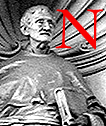[Note: This is an abstract of a presentation to be delivered at the Hitting the Road! Experiences and writing of travellers in the Victorian and Edwardian Eras Conference (University of Tours, 2-3 February, 2023). — Taylor Tomko]
 ineteenth-century womens travel writing studies have long been dominated by the figure of the eccentric solitary traveller, the intrepid Victorian spinster vigorously prodding the ends of the earth with her parasol (Robinson 1990, vii). This paper seeks to broaden the consideration of Victorian womens travel writing by focusing on Annie Brassey, a woman traveller who does not fit this type, and her bestseller A Voyage in the Sunbeam, our Home on the Ocean for Eleven Months (1878). Brassey accompanied her husband with their children on a series of voyages round the world between 1874 and 1887. A Voyage in the Sunbeam is the account of their voyage round the world, traveling west from July 1876 to May 1877, through Madeira and the Canary Islands, Brazil, Chile, Tahiti, Hawaii, Japan, Hong Kong, Singapore, Sri Lanka, through the Suez Canal and across the Mediterranean Sea. The wealthy family's journeys illustrate the evolution of the ways a circumnavigation could be considered in the second half of the century, as well as the technological innovations which made it possible for a baby and three older children to join their father in his imperial functions round the world. The narrative is both an illustration and a statement of these (socially conditioned) possibilities. It made it possible for everyone to vicariously enjoy travelling on a private yacht with a staff of thirty.
ineteenth-century womens travel writing studies have long been dominated by the figure of the eccentric solitary traveller, the intrepid Victorian spinster vigorously prodding the ends of the earth with her parasol (Robinson 1990, vii). This paper seeks to broaden the consideration of Victorian womens travel writing by focusing on Annie Brassey, a woman traveller who does not fit this type, and her bestseller A Voyage in the Sunbeam, our Home on the Ocean for Eleven Months (1878). Brassey accompanied her husband with their children on a series of voyages round the world between 1874 and 1887. A Voyage in the Sunbeam is the account of their voyage round the world, traveling west from July 1876 to May 1877, through Madeira and the Canary Islands, Brazil, Chile, Tahiti, Hawaii, Japan, Hong Kong, Singapore, Sri Lanka, through the Suez Canal and across the Mediterranean Sea. The wealthy family's journeys illustrate the evolution of the ways a circumnavigation could be considered in the second half of the century, as well as the technological innovations which made it possible for a baby and three older children to join their father in his imperial functions round the world. The narrative is both an illustration and a statement of these (socially conditioned) possibilities. It made it possible for everyone to vicariously enjoy travelling on a private yacht with a staff of thirty.
Through their travels and her narration, Annie Brassey domesticated the world for a British and colonial audience (Ryan 2006, p. 583) notably by collecting flora and fauna for the planned Brassey museum. This paper aims to show how her narrative and photographs domesticated the act of traveling itself as well, by foregrounding the identity of the traveler as a family unit and putting in the background the I of the writer-traveller. Although organized like a logbook with date entries and many references to the weather at sea for instance, Lady Brassey's narrative partakes more generally of the travel narrative genre with reports of land excursions. Analysing her narrative alongside some photographs from the Brassey albums (which include the ones she took and those she collected from others), I will study how her travel writing addressed the challenges raised by travelling to British definitions of motherhood and femininity, challenges which called for both a reassertion and a reluctant reconfiguration of British domestic definitions.
Created 16 January 2023